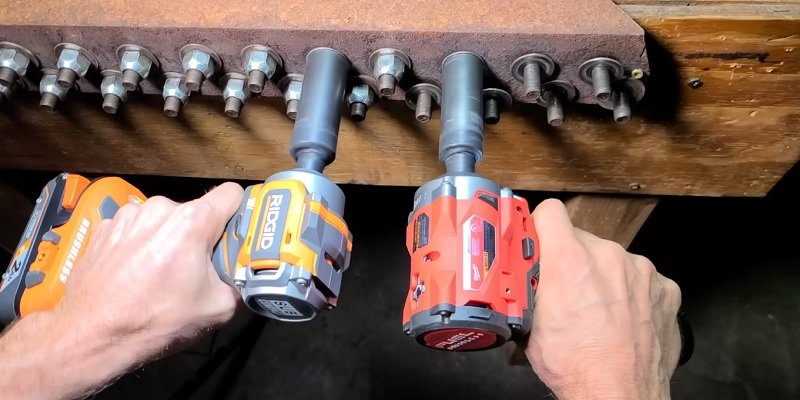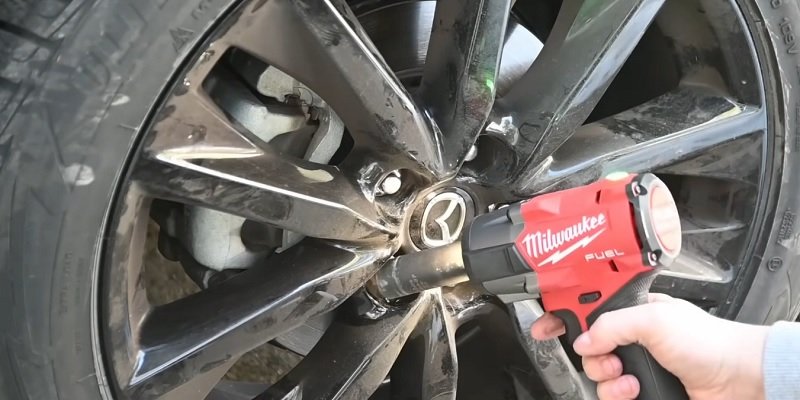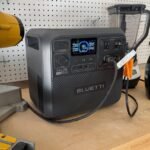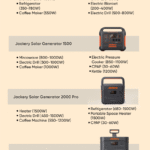Disclosure: This post contains affiliate links and I will be compensated if you make a purchase after clicking through my links. Learn More
An air impact wrench typically requires a minimum of 4 CFM (cubic feet per minute) of airflow. It is important to choose an air compressor that can provide sufficient SCFM (standard cubic feet per minute) for the specific impact wrench being used.
Choosing the right air compressor for an air impact wrench is crucial in ensuring optimum performance. One important factor to consider is the SCFM (standard cubic feet per minute) requirement of the impact wrench. SCFM refers to the volume of air flow that the air compressor can deliver.
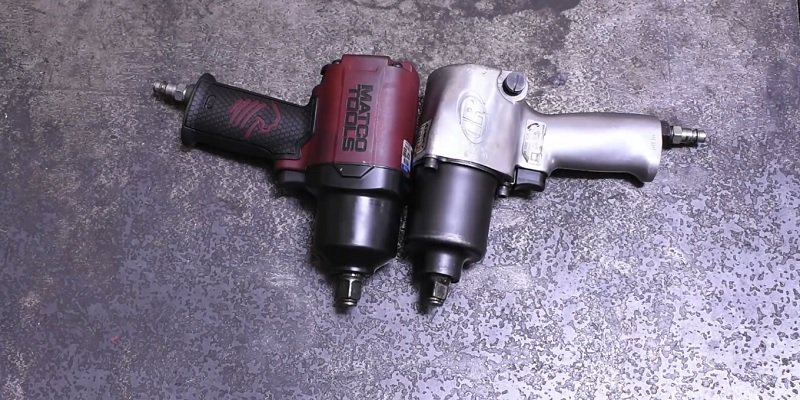
Different impact wrenches may have varying SCFM requirements depending on their size and power. To achieve the best results, it is essential to select an air compressor that can meet or exceed the minimum SCFM requirement of the impact wrench.
This will ensure that there is an adequate supply of compressed air to power the tool and enable it to perform at its full potential. We will explore the SCFM requirements for impact wrenches and provide guidance on choosing the right air compressor for optimal performance.
Understanding Scfm For Impact Wrenches
What Is Scfm?
An impact wrench is a powerful tool commonly used for loosening and tightening nuts and bolts. It utilizes compressed air to generate the required torque. SCFM, which stands for Standard Cubic Feet per Minute, is a measurement of the airflow capacity of an air compressor. It indicates how much air the compressor can deliver at a specific pressure level. In the case of air impact wrenches, SCFM is vital to ensure the tool’s optimal performance.
Importance Of Scfm In Impact Wrenches
The SCFM rating of an air compressor directly affects the performance of an impact wrench. It determines the amount of force the wrench can deliver, directly impacting its speed and efficiency. Using an air compressor with an inadequate SCFM rating can result in reduced power and sluggish performance of the impact wrench, compromising its ability to handle heavy-duty tasks effectively.
Relationship Between Scfm And Wrench Performance
The relationship between SCFM and a wrench’s performance is straightforward. The higher the SCFM rating of the air compressor, the more air it can deliver to the impact wrench. This translates to increased torque and faster operation. On the other hand, if the SCFM rating is too low, the air compressor may not deliver enough air volume to effectively power the impact wrench, resulting in weaker performance and slower operation.
It is important to note that the specific SCFM requirements for an impact wrench may vary depending on the size and power of the tool. Larger impact wrenches typically require higher SCFM ratings to perform optimally compared to smaller, less powerful models.
Factors Affecting Scfm Requirements For Impact Wrenches
When it comes to using an impact wrench, determining the right SCFM (Standard Cubic Feet per Minute) requirement is crucial. SCFM is a measurement that determines the amount of air flow needed to operate the impact wrench effectively. Several factors come into play when determining the SCFM requirements for impact wrenches. Let’s take a closer look at these factors:
Size Of Impact Wrench
The size of the impact wrench have a significant impact on the SCFM requirements. Additionally, the size of the impact wrench, typically measured by the drive size, can also affect the SCFM requirement. Larger impact wrenches generally require higher SCFM to deliver optimal performance.
Desired Torque Output
The desired torque output plays a crucial role in determining the SCFM requirements. Impact wrenches generate torque to loosen or tighten fasteners. Higher torque requirements will necessitate a higher SCFM rating to provide adequate power and consistent performance. If you plan to work on heavy-duty applications that require high torque, a higher SCFM compressor might be necessary.
Duty Cycle And Continuous Use
The duty cycle and continuous use of the impact wrench are essential considerations. Some impact wrenches are designed for intermittent use, while others are built for continuous operation. Impact wrenches used in industrial settings or professional workshops may require a higher SCFM rating to handle continuous and heavy usage without overheating or experiencing performance issues.
Operating Pressure
The operating pressure of the impact wrench is another crucial factor in determining the SCFM requirements. Impact wrenches typically require a specific pressure range to operate optimally. Higher-pressure requirements may demand a higher SCFM rating to maintain consistent performance and provide sufficient power to the tool.
Efficiency Of Air Compressor
The efficiency of the air compressor plays a vital role in meeting the SCFM requirements. A more efficient air compressor can deliver a higher SCFM and maintain consistent pressure, allowing the impact wrench to function at its best. It is crucial to consider the compressor’s duty cycle, tank size, and CFM output to ensure it can provide the necessary SCFM for the impact wrench.
In conclusion, when determining the SCFM requirements for impact wrenches, factors such as the type and size of the wrench, desired torque output, duty cycle, operating pressure, and efficiency of the air compressor must be taken into account. By considering these factors, you can ensure that your impact wrench performs optimally and delivers the power and torque needed for your specific applications.
Calculating Scfm Requirements For Impact Wrenches
Step-by-step Guide To Calculating Scfm
Calculating the required SCFM (Standard Cubic Feet per Minute) for your impact wrench is essential to ensure proper performance and efficiency. Follow this step-by-step guide to determine the SCFM requirements:
- Assessing Impact Wrench Specifications: Start by examining the manufacturer’s specifications for your impact wrench. Look for the recommended operating pressure and the average air consumption in SCFM.
- Determining Torque Requirements: Evaluate the specific torque requirements for the tasks you’ll be performing with the impact wrench. Higher torque applications generally require larger SCFM.
- Considering Duty Cycle and Continuous Use: Take into account the duty cycle and continuous use of the impact wrench. Some impact wrenches may require higher SCFM for continuous use compared to occasional or intermittent use.
- Evaluating Operating Pressure: Determine the required operating pressure for your impact wrench. Usually, impact wrenches operate at around 90 PSI, but variations may occur depending on the specific model.
- Factoring in Efficiency of Air Compressor: Consider the efficiency of your air compressor. The SCFM rating of your compressor should meet or exceed the required SCFM of the impact wrench for optimal performance.
Assessing Impact Wrench Specifications
Before calculating SCFM requirements, it is crucial to assess the impact wrench specifications provided by the manufacturer. These specifications typically include information on the recommended operating pressure and the average air consumption in SCFM. By understanding these details, you can determine the baseline requirements for your impact wrench.
Determining Torque Requirements
When calculating the SCFM requirements for your impact wrench, it is important to take into account the specific torque requirements for your intended tasks. Higher torque applications generally demand more air volume and, consequently, a higher SCFM rating. Consider the type of projects you’ll be working on and ensure that the impact wrench and air compressor combination can meet the required torque demands.
Considering Duty Cycle And Continuous Use
Another factor to consider when calculating SCFM requirements is the duty cycle and continuous use of your impact wrench. If you expect to use the impact wrench continuously or for extended periods, it may necessitate a higher SCFM rating. On the other hand, if you anticipate intermittent or occasional use, a lower SCFM may be sufficient. Assess your usage patterns and select an appropriate SCFM rating accordingly.
Evaluating Operating Pressure
The operating pressure of an impact wrench typically ranges around 90 PSI. However, it is essential to verify the recommended operating pressure for your specific model. Different models might have variations in operating pressure requirements. Ensure that your air compressor can provide the necessary operating pressure consistently to avoid performance issues with your impact wrench.
Factoring In Efficiency Of Air Compressor
The efficiency of your air compressor plays a crucial role in meeting the SCFM requirements of your impact wrench. Ensure that your air compressor’s SCFM rating matches or exceeds the required SCFM for the impact wrench. A larger SCFM rating on the compressor can provide a buffer for optimal performance, even in challenging conditions.
Selecting The Right Air Compressor For Impact Wrench
Matching Scfm Requirements With Air Compressor Output
An impact wrench requires a steady supply of compressed air to deliver the power needed for loosening or tightening bolts quickly and efficiently. The airflow needed to operate an impact wrench is measured in standard cubic feet per minute (SCFM). To ensure optimal performance, it is crucial to match the SCFM requirements of the impact wrench with the output of the air compressor.
Choosing The Ideal Tank Size
In addition to the SCFM rating, the tank size of the air compressor is another important factor to consider. The tank acts as a reservoir, storing compressed air that can be used when the demand exceeds the compressor’s output capacity. A bigger tank size allows for more air storage, providing a consistent airflow and minimizing any interruption during usage.
Evaluating Noise And Portability
Noise level and portability are essential considerations when selecting an air compressor for an impact wrench. Some compressors are designed to be quieter, which can be beneficial for users who work in noise-sensitive environments or prefer a less disruptive working environment. Additionally, portability is crucial, especially for those who need to move their equipment frequently. Opting for a compact and lightweight compressor can make transportation and storage more convenient.
Considering Power Source And Voltage Requirements
Another factor to take into account is the power source and voltage requirements of the compressor. Air compressors can be powered by electricity, gas, or batteries. Electric compressors are commonly used due to their availability and ease of use. It is important to check the voltage requirements of the compressor and ensure compatibility with the available power source to avoid any complications during operation.
Ensuring Compressor Longevity With Proper Maintenance
Maintaining the air compressor is crucial to ensure its longevity and optimal performance. Regular maintenance, such as checking and changing filters, draining moisture from the tank, and lubricating moving parts, can help prevent damage and extend the lifespan of the compressor. Following the manufacturer’s guidelines and scheduling routine maintenance checks will help keep the compressor in good working condition.
Frequently Asked Questions On How Many Scfm For Impact Wrench?
What Scfm Is Needed For Air Tools?
Air tools typically require a minimum SCFM (Standard Cubic Feet per Minute) of 4.
How Many Cfm Do I Need For A 1 Inch Impact?
For a 1-inch impact, you will need about 4 CFM (Cubic Feet per Minute) of air flow.
How Much Torque Needed For Impact Wrench?
An impact wrench typically requires a torque of at least 150-200 foot-pounds.
How Big Of An Air Compressor Do I Need To Run Tools?
To determine the size of air compressor you need to run tools, consider the required cubic feet per minute (CFM) rating of your tools. Different tools have different CFM requirements. Choose an air compressor with a CFM rating that meets or exceeds the highest CFM requirement of your tools.
Final Thoughts
To ensure optimal performance and efficiency with your impact wrench, it is crucial to understand the necessary SCFM (Standard Cubic Feet per Minute) requirements. By choosing an air compressor that meets or exceeds the SCFM rating of your impact wrench, you can ensure consistent, powerful performance.
Remember, a higher SCFM rating will result in faster and more effective operation. So, before grabbing any air compressor, make sure to check the manufacturer’s specifications for the SCFM requirement of your impact wrench. Investing in the right equipment will save you time, effort, and frustration in the long run.

